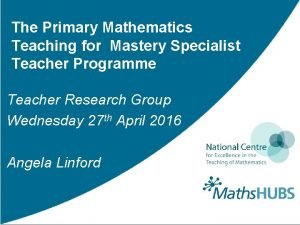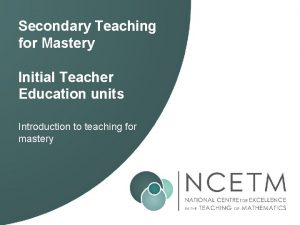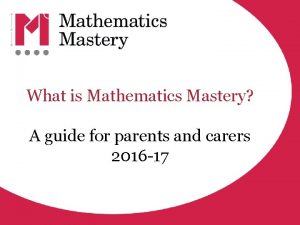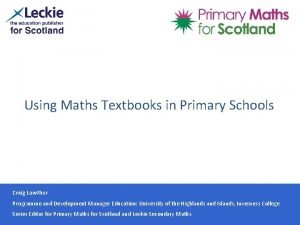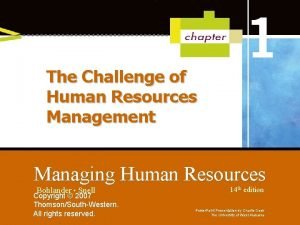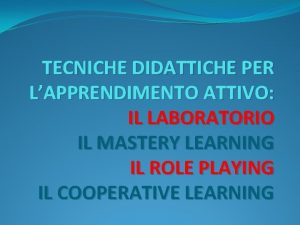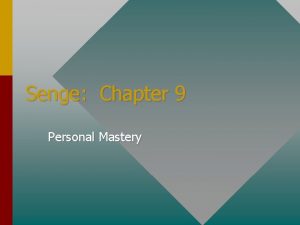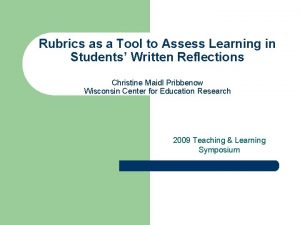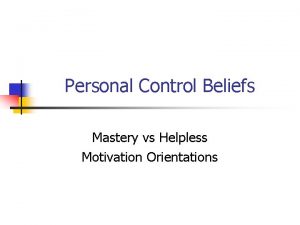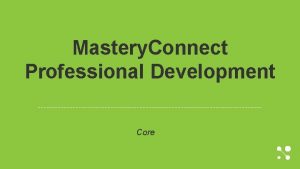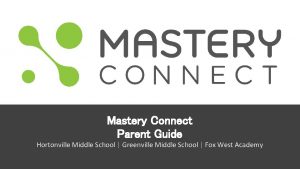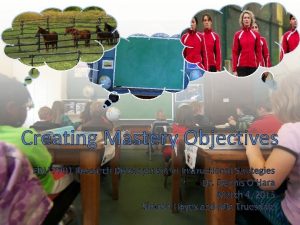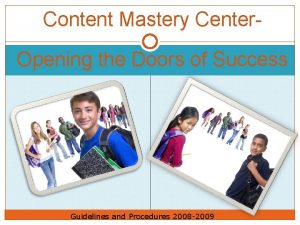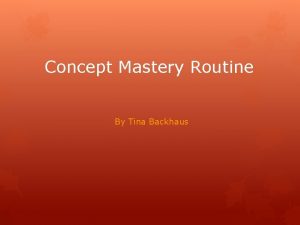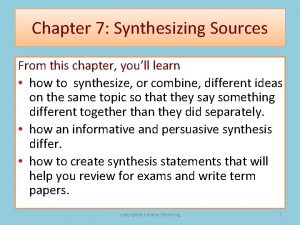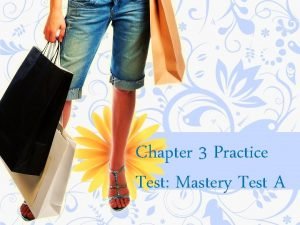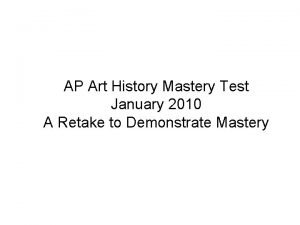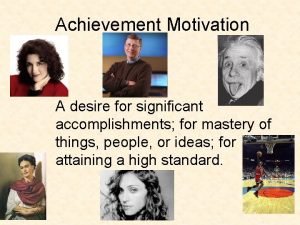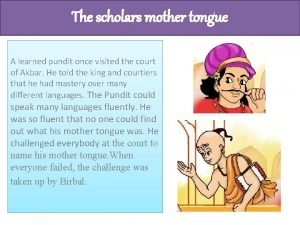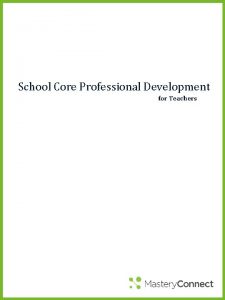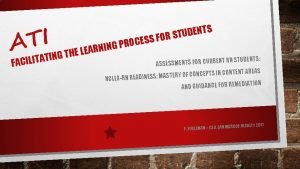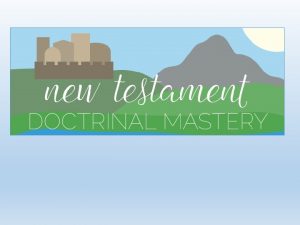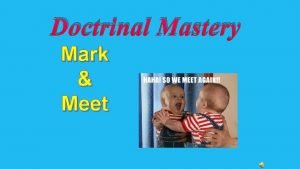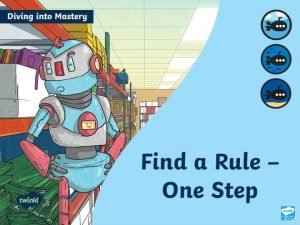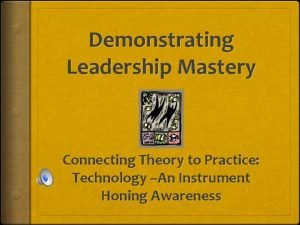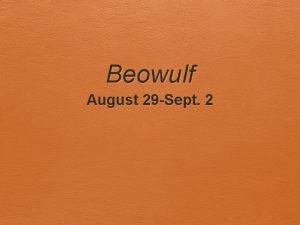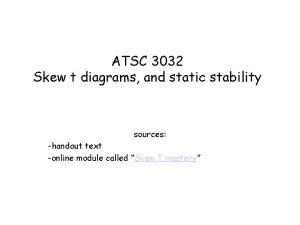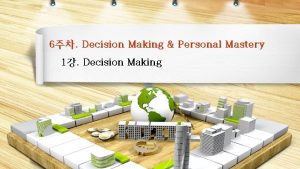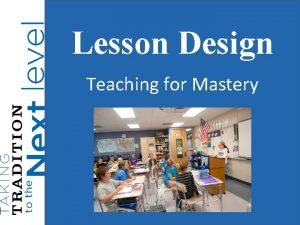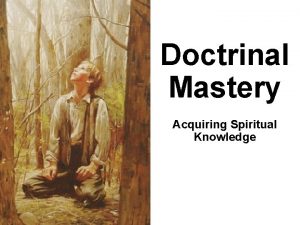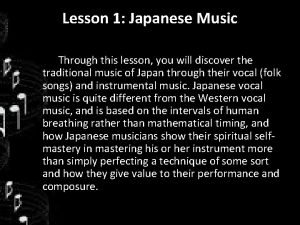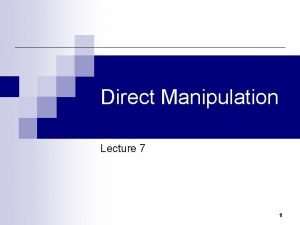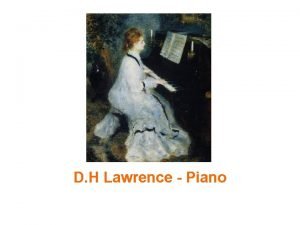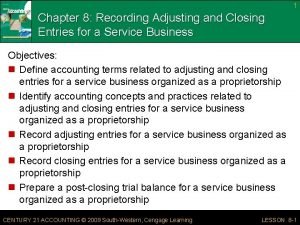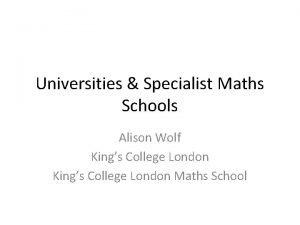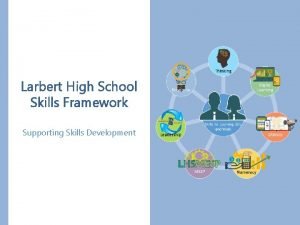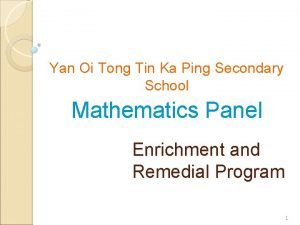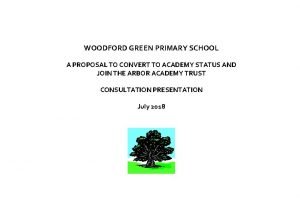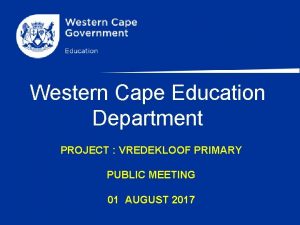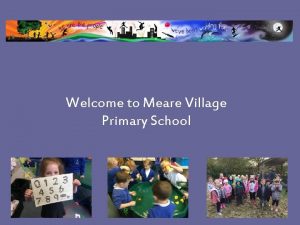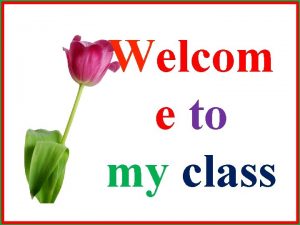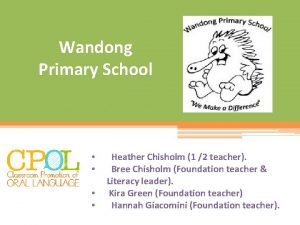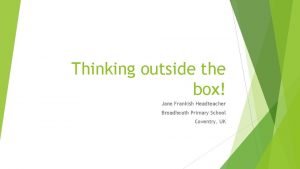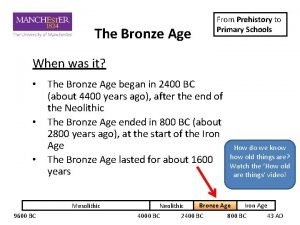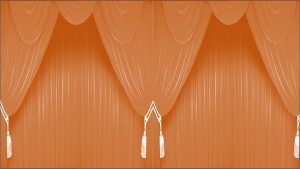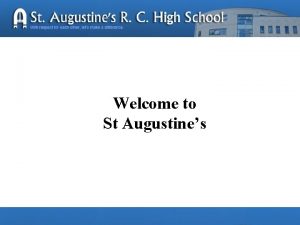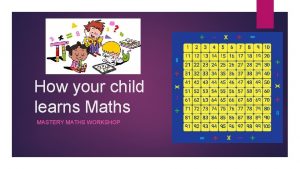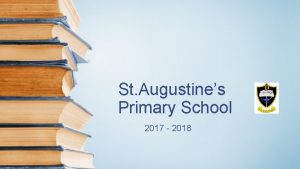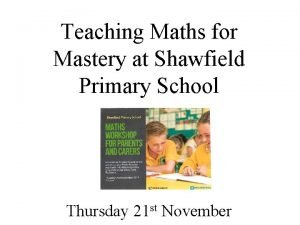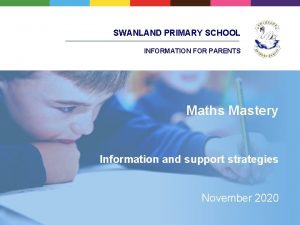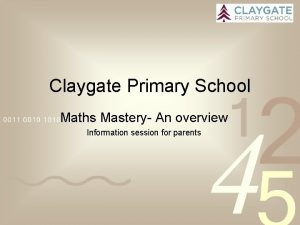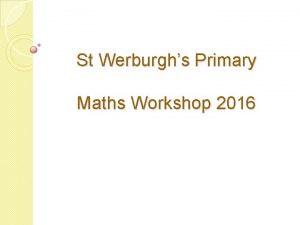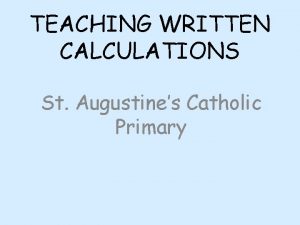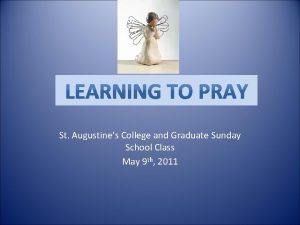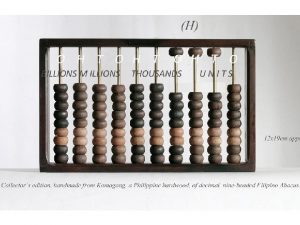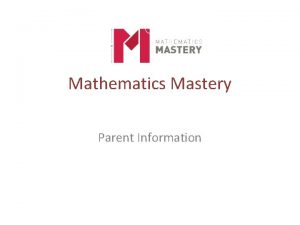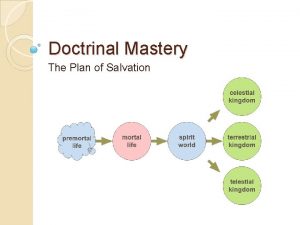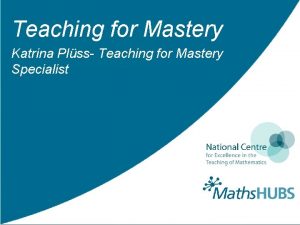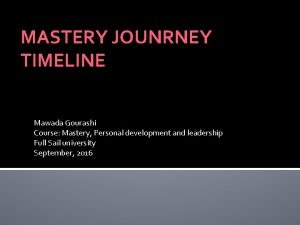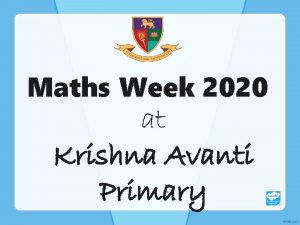ST AUGUSTINES RC PRIMARY SCHOOL Maths Workshop Mastery































































- Slides: 63

ST AUGUSTINE’S RC PRIMARY SCHOOL Maths Workshop Mastery Approach Addition and Subtraction


AIMS OF TODAY • To get an insight into how Maths is taught at St Augustine’s, including Maths Mastery. • To explore the key knowledge, skills and understanding children need around number and how Maths is crucial to be successful in today and tomorrow’s world. • To begin a journey of understanding around calculation, starting with addition. • To take away some ideas to support your children at home.

THE MASTERY APPROACH – WHAT IS MASTERY? The essential idea behind mastery is that all children need a deep understanding of the mathematics they are learning…

Mastery is all about representing maths so that it makes sense to the children, so the models, images and language that connect the maths are carefully planned. Most children access the same content at the same pace. All children are given the chance to access the learning with varying support when needed. Scaffolded Breadth, learning is a feature. depth and challenge are added to the learning. MASTERY – THERE IS NO ‘EASY’ OPTION IN LIFE

What does it look like? How do we achieve it? DEPTH efficient accurate flexible appropriate Maths mastery = Fluency intelligent practice variation time structures knowledge reasoning connections

CONCRETE-PICTORIAL-ABSTRACT APPROACH Concrete, pictorial, abstract (CPA) is a highly effective approach to teaching that develops a deep and sustainable understanding of maths in pupils. Often referred to as the concrete, representational, abstract framework, CPA was developed by American psychologist Jerome Bruner. It is an essential technique within the Singapore method of teaching maths for mastery.

Structuring Learning Active / Concrete Building visual images 13 - 8 Abstract X X + XX XX XX 12 + 19

Just a few of the concrete tools we use to support children that you can use too…



IT’S ALL ABOUT THE WAY WE SEE THINGS…

NUMBER SENSE! Children need to understand our number system, starting with counting numbers, building an understanding of how our numbers work and fit together. This includes exploring place value and comparing and ordering numbers then applying this understanding in different contexts.

PLACE VALUE Place value is at the heart of the number system. All digits have a value and a secure understanding of this will enable children to use and understand different calculation methods.

1 1 2 3 9






MATHS IN THE EARLY YEARS Children are natural problem solvers Number and numerals are abstract concepts – 3 can mean very little to a child. Children need to build images of numbers – linking numerals to objects Maths in the early years is play based. The aim is to build understanding and not written methods. Maths games, songs, rhymes and activities help build understanding.

Children count reliably with numbers from one to 20, place them in order and say which number is one more or one less than a given number. Using quantities and objects, they add and subtract two single-digit numbers and count on or back to find the answer. They solve problems, including doubling, halving and sharing. BY THE END OF RECEPTION EARLY LEARNING GOAL

Concrete – make a stick of four Combining two parts to make a whole. At home various other objects can be used for this concept, for example, pasta, pebbles, teddy bears Pictorial – part whole model Abstract - 4= + 1

Recalling facts It is important that children recognise number bonds different pairs of numbers with the same total. 10 7+3 8 3+2 6+2 5+3 1+4 6+3 6 3+3 5 5+4 9 7 6+1 3+4

Making 10 Concrete Pictorial Equals means ‘is the same as’ Abstract

Counting on… Concrete Pictorial Abstract

Adding using Dienes within 10 Concrete Pictorial Abstract This can be replicated at home using straws to represent sticks of 10 and straws cut into 10 equal parts for ones.

Adding using Dienes acrossing 10 Concrete Pictorial Abstract This can be replicated at home using straws to represent sticks of 10 and straws cut into 10 equal parts for ones.






Counting on 4 from 5 – emphasis needs to be on counting the jumps not the numbers


PARTITIONING Partitioning is a way of working out maths problems that involve large numbers by splitting them into smaller units so they’re easier to work with. Children are taught this method before they learn to add numbers in columns. Partitioning gives children a different way of visualising maths problems, and helps them work out large sums in their head. By breaking numbers down into units that are easy for them to calculate mentally. 432 + 325 400 + 300 = 700 30 + 20 = 50 2+ 5= 7 700 + 50 + 7 = 757




` ones, tens or hundreds.

Column methods Children with a secure understanding of place value will better understand the column method for addition and subtraction. Understanding place value will help children see the relationship between the columns.

SUBTRACTION

Partition Take away 12 8 STRUCTURES OF SUBTRACTION Difference





A PICTORIAL REPRESENTATION: PART, WHOLE… It is a mathematical representation of a problem. . A way of modelling. . . • the knowns and unknowns. • the parts and the whole. It is a representation that reveals the relationship of the numbers.

A PICTORIAL REPRESENTATION: THE BAR MODEL… It is a mathematical representation of a problem. . A way of modelling. . . the knowns and unknowns. the parts and the whole. It is a representation that reveals the structure of a word problem.

Peter has 3 marbles. Harry gives Peter 1 more marble. How many marbles does Peter have now? CONCRETE ABSTRACT

Peter has 5 pencils and 3 rubbers. How many more pencils than rubbers does he have?

MATHS LESSONS DO (FLUENCY) THINK/EXPLAIN & SOLVE (REASONING AND PROBLEM SOLVING)

YEAR 1 DO

YEAR 1 REASONING

YEAR 1 REASONING

YEAR 4 DO

YEAR 4 DO

YEAR 4 REASONING

YEAR 4 REASONING

YEAR 6 DO

YEAR 6 REASONING


HELPING AT HOME Cooking or baking – measuring and weighing Look at numbers in the environment e. g. telephone keys, number plates, door numbers, book pages, sleeps until Christmas! Money - shopping Comparing Birthdays, Homework heights Months of the year, Days of the week
 Maths mastery year 3
Maths mastery year 3 Primary mathematics specialist teacher programme
Primary mathematics specialist teacher programme 5 big ideas maths mastery
5 big ideas maths mastery Disadvantages of maths mastery
Disadvantages of maths mastery What is seifuku
What is seifuku Lowther higher maths ebook download
Lowther higher maths ebook download Hr mastery
Hr mastery Mastery learning definizione
Mastery learning definizione Personal mastery definition
Personal mastery definition Mastery rubric
Mastery rubric Doctrinal mastery core document old testament
Doctrinal mastery core document old testament Helpless orientation
Helpless orientation Www.masteryconnect.com
Www.masteryconnect.com Mastery connect code
Mastery connect code Avagment
Avagment Mastery objectives examples
Mastery objectives examples Content mastery classroom
Content mastery classroom Concept mastery
Concept mastery Synthesizing sources
Synthesizing sources Chapter 3 mastery test a answers
Chapter 3 mastery test a answers Painting mastery test
Painting mastery test Desire for significant accomplishment
Desire for significant accomplishment Level of mastery
Level of mastery What was pundit's mother tongue?
What was pundit's mother tongue? Byron shelley and keats mastery test
Byron shelley and keats mastery test Student.mastery connect.com
Student.mastery connect.com Ati grading rubric
Ati grading rubric Old testament doctrinal mastery
Old testament doctrinal mastery Doctrinal mastery reference guide
Doctrinal mastery reference guide Diving into mastery
Diving into mastery Mastery connect
Mastery connect Beowulf double entry journal answers
Beowulf double entry journal answers Mastery points lookup
Mastery points lookup Skew t mastery
Skew t mastery The harlem renaissance: mastery test
The harlem renaissance: mastery test Inner peace mastery
Inner peace mastery Creativity and personal mastery
Creativity and personal mastery Mastery learning lesson plan examples
Mastery learning lesson plan examples Doctrinal mastery core document pdf
Doctrinal mastery core document pdf Emily brontë: mastery test
Emily brontë: mastery test What music is basically meditative in character
What music is basically meditative in character Doctrinal mastery passages
Doctrinal mastery passages Bloom mastery learning
Bloom mastery learning Nn direct cont
Nn direct cont Piano d.h. lawrence
Piano d.h. lawrence 8-4 mastery problem post closing trial balance
8-4 mastery problem post closing trial balance Yellow magenta and cyan are the ___
Yellow magenta and cyan are the ___ Specialist maths school
Specialist maths school Larbert high school maths
Larbert high school maths Yan oi tong tin ka ping secondary school
Yan oi tong tin ka ping secondary school Woodford green primary school
Woodford green primary school Vredekloof primary school fees
Vredekloof primary school fees Meare village primary school
Meare village primary school Goosehill primary school
Goosehill primary school Gongshang primary school
Gongshang primary school Downe manor primary school
Downe manor primary school This is mahbub alam class 3
This is mahbub alam class 3 Chachua government primary school
Chachua government primary school Heather chisholm
Heather chisholm Broadheath primary school coventry
Broadheath primary school coventry Prehistory for primary school
Prehistory for primary school A e i o u a i
A e i o u a i Farzana and jamil are from kushtia
Farzana and jamil are from kushtia Swanland primary school
Swanland primary school

